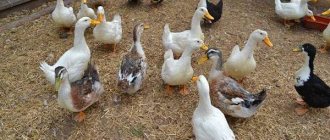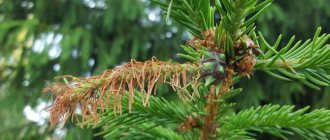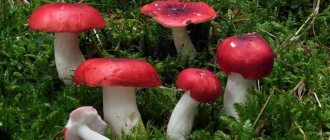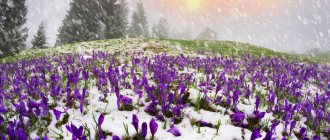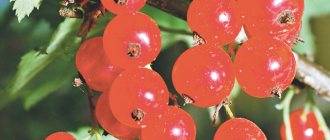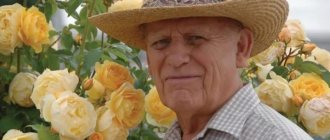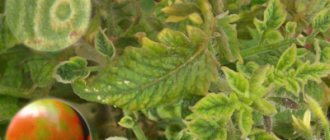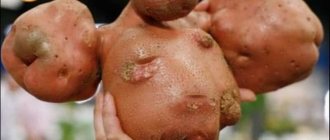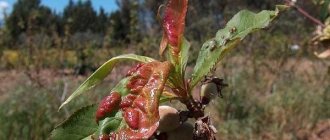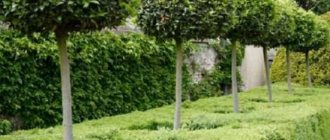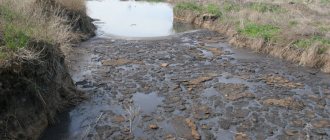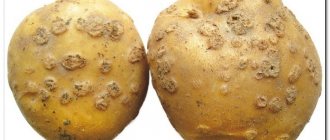A change in the color of pine needles and their premature falling off, accompanied by the appearance of growing spots, may be a sign of a fungal disease. There are several varieties of it, which also affect other coniferous species and have characteristic manifestations. But all of them sometimes cause a real “needle fall” with subsequent death of trees. Knowing the possible causes and main symptoms of an infection, you can recognize it at the very beginning of infection, when it will be much easier to fight it.
Coniferous diseases: diagnosis and treatment of schutte
Walking through a coniferous forest in search of mushrooms, summer residents usually do not pay attention to the trees themselves. Fresh fragrant air and the rustle of fallen needles are quite enough.
If the needles turn yellow and fall off, it’s time to sound the alarm
The needles underfoot do not cause alarm: we know that the needles are changed leaves, and they also fall off, and new ones grow in place of the fallen ones. True, the needles fall not like leaves - not every autumn, but in some special order determined by the tree itself.
Gray pine shutte
The causative agent of the disease is the fungus Hypodermella sulcigena, which becomes more active in early summer. Thus, gray pine shutte causes yellowing of the upper part of the needles, which gradually becomes gray. It is noteworthy that the healthy and infected parts of the needles are separated by a violet-brown stripe. Black round pycnidia appear on the needles, and in the spring of next year - apothecia of a black oblong fungus. The needles on which the Hypodermella sulcigena fungus has settled do not fall off for a long time.
Schutte - a disease of conifers
A completely different attitude towards coniferous plants on your own site. If a real needle fall begins, you know it’s time to call an ambulance. And needle fall happens, the branches become bare. Such diseases are called Schutte . The name comes from the German verb schütten - to sprinkle. That is, the needles fall off. The causative agents of the disease are fungi, they lead to a change in the color of the needles, their death and falling. The disease has many faces; several types of Schutte are now known.
Common Schutte pine
Two types of mushrooms are harmful. In nurseries, one destroys seedlings; at the age of 6-14 years, both become rampant; at an older age, the second predominates. It is difficult to notice the onset of the disease: after all, at the time when the first signs appear (the end of October and the beginning of November), summer residents have already left their plots, moving to the comfort of city apartments.
Schutte pine. Photo from mtdata.ru
Diagnosis of the disease Spores overwinter in old fallen needles, so infection is possible throughout the growing season, but more often it occurs at the end of summer, during the period of spore maturation. First, yellow spots appear on the needles. Then the fungal pycnidia occupy part of the needles. In the spring, as soon as the snow melts, the needles turn red and die. It will fall off from young three-year-old trees within the first year. In mature trees, needles fall off from the lower branches, so the damage is not too great, but young plants die because they are left without needles at all.
Prevention and treatment
- Buy seedlings from nurseries where plantings are subject to phytosanitary control. This is at least some kind of guarantee. If the site is located near a pine forest, the likelihood of disease increases.
- Do not plant pine trees in low places where water stagnation is possible. Loamy and heavy clay soils are also undesirable. Treat with fungicides “Fundazol”, “Zineb”, colloidal sulfur (analogs of drugs can be found in the article Getting to know fungicides - drugs for combating plant diseases) twice a summer:
- the first - at the end of June (for the North-West - the first ten days of May) or early July (this is the time of summer);
- the second - in the second half of July. This is the main treatment, it can be repeated (often in 3 doses at an interval of two weeks), but no later than the beginning of September. That is, the timing for the regions may be different, depending on the weather.
Snow disease (phacidia) of pine and spruce
The greatest damage is caused to 5-6 year old plants.
Schutte snowy. Photo from the site i0.wp.com Diagnostics The needles become infected in October - November, when there are slight sub-zero temperatures. A grayish-white coating appears on it, similar to a cobweb. This is the mycelium of the fungus that penetrates the stomata. He is able to do this even in thick snow, at a temperature of -5°C. The higher the snow, the more severe the damage to trees.
Please note: the temperature regime of the snow cover for plants of different ages. Drawing from the textbook by Churakov B.P. “Forest phytopathology.”
Temperature regime of snow cover
In spring, the needles turn reddish, dry out, but do not fall off. Over time, the color changes to ashy, the needles become fragile. These are ripe fruiting bodies.
Snowy Schutte: the needles dry out, but do not fall off. Photo from le-park.com
Spores fly at the end of September - October, sometimes in the middle of winter, if there is a thaw.
Prevention and treatment
- Plant plants in places where there is no snow and drifts, away from pine trees.
- Treatment with fungicides (Benomil, colloidal sulfur, Bayleton) after autumn rains to preserve the drug on the plants before going under the snow. However, for regions the timing and number of treatments may be different: for example, for Karelia this is November (in terms of powder), when the plants are not completely covered with snow.
Schutte brown, or brown snow mold
Diagnostics Dark mycelium in the form of a web is visible on the needles; it entwines the needles and branches, as if gluing them together. The needles turn brown and die, but do not fall off.
Prevention and treatment In spring, accelerate the melting of snow, cut out diseased branches and burn them. Treatment with fungicides is the same as for other types of schutte.
The first signs become visible in the spring on last year's needles. The needles change color to brown and dry out, but do not fall off. Spores fly in September - October, especially intensely during the rains.
Brown schutte was eaten. Photo from the site landbruketshus.no
Prevention and treatment The measures are the same as for the ordinary shutte.
Schütte Weymouth pine
It is beautiful, and therefore loved by summer residents. It also exists in nature; its habitat is the Moscow, Smolensk, Oryol and Voronezh regions.
Diagnostics Two types of fungi parasitize. When Leptostroma is infected, the needles on individual branches of the crown are affected: they dry out and change color to brown. Small black bubbles are located along the needles - this is the stage of the beginning of fruiting.
Fruiting of a mushroom on needles. Photo from ipmimages.org
Another pathogen, Hyphoderma brachysporum, causes the needles to turn brown and fall off in the summer.
Weymouth pine schütte. Photo from greeninfo.ru
Old needles are usually affected, but young ones can also be colonized by parasites.
Prevention and treatment The disease is considered little studied. Application of fungicides.
Schutte junipers
Three fungi parasitize. In nature, the disease occurs in the Moscow, Tver, Sakhalin regions, and on the Black Sea coast of the Caucasus.
Diagnostics The needles throughout the crown turn brown and dry out. Dark gray or brown pads form along the needles. Pests overwinter on dead needles that remain on the branches. Plants are more often affected by plantings that are too dense.
Juniper Schutte. Photo from nahuby.sk
Prevention and treatment The disease is considered poorly studied.
Application of fungicides.
Treatment methods
Despite such a variety of diseases, the treatment regimen in most cases is the same.
Removing diseased parts
The fight against disease begins with removing the affected parts, and every garden owner can handle this on their own:
- branches are carefully trimmed;
- the affected bark is removed (if it practically falls off by itself), and the bare area on the trunk is treated with garden varnish;
- yellowed needles are shaken off.
Any formations on conifers (fungal formations, settlements and nests of pests) are also removed mechanically. Everything that was collected from a diseased plant (from needles to insects) is immediately burned.
Medications
After this, treatment is continued using specific drugs. They need to be sprayed regularly, almost until complete recovery, on conifers. Fungicides - against fungi, insecticides - against those caused by pests, biostimulants - against non-infectious lesions.
Fungicides developed specifically for the treatment of fungal and bacterial diseases:
- the drug Rakurs is one of the most effective fungicides against rust and schutte, available in the form of powder and concentrated emulsion;
- Medea is a more universal remedy, not limited to any specific fungal diseases;
- Pokon - the drug is used for all diseases in which the needles turn brown or yellow;
- Sporagine Pine is a systemic biofungicide optimized for conifers.
Photo:
Insecticides developed to treat plants from diseases caused by pests:
- universal - from various insects (Pinotsid, Aktara, Karbofos - from aphids, sawfly, hermes);
- acaricidal - against ticks (Kleschevit, Nissoran);
- aficidal - from aphids (Biotlin);
- larvicidal - from larvae and caterpillars (Iskra, Lepidotsid, ExtraFlor);
- ovicidal - from eggs (Drug 30 Plus).
The most powerful insecticides are:
- Aktara;
- Aktellik;
- Antisheshelin;
- Bifenthrin;
- Vitalizer;
- Decis;
- Inta-Vir;
- Karbofos;
- Clipper;
- Creocide;
- Lepidocide;
- Neoron;
- Forsyth;
- Fury.
Photo:
For any diseases, you need to use biostimulants to generally strengthen the immunity and health of conifers. Some of the best are Zircon and Epin. You can also apply various fertilizers for this purpose:
- Aqua Agricola;
- Bona Forte;
- Hera;
- Green needle;
- Compo;
- Pokon;
- Reasil;
- Fusco;
- Fertika;
- Florovit.
Photo:
The drug chosen depending on the disease is used as soon as the first signs of damage are noticed. Spraying or root feeding is usually done in the evening or early in the morning, in calm and dry weather, using protective measures (special suit, goggles, etc.). The concentration is taken exactly as indicated in the instructions. Repeat treatment is usually carried out on 10, 14 or 21 days - this also depends on the manufacturer. If after two treatments the conifer still has not recovered, you need to either change the product or call specialists.
Related article: Fertilizers for coniferous plants
Folk remedies
Folk remedies can be used for medicinal purposes. They are budget-friendly compared to store-bought drugs. Almost all of them are universal, that is, they combine the properties of a fungicide, an insecticide, and a biostimulant.
However, you need to understand that they are not so effective, they do not always hit the target, and sometimes it happens that they harm the plants themselves. Therefore, extreme caution should be taken with them. These include:
- concentrated solutions of potassium or laundry soap;
- citrus infusion;
- tobacco infusion;
- wood ash;
- garden varnish prepared according to a home recipe;
- processing the trunk with clay with manure and ash or slaked lime.
There are also products that cannot be clearly classified as store-bought drugs or folk recipes. These are chemical active substances that are purchased separately, and then various mixtures, concentrates and solutions are prepared on their basis. They do not treat any specific diseases of conifers, but they cope with most of them. These include: Bordeaux mixture, copper sulfate, colloidal sulfur.
Diseases of coniferous plants: schutte, rust diseases, prevention
Diseases of conifers Coniferous plants do not lose their attractiveness for a long time and can delight with their appearance for many years, being located throughout the summer cottage. Such plants can not only be a decoration for the area, but also an excellent material for creating various kinds of wood compositions. Such trees are distinguished by their longevity and uniform appearance all year round, but just like other plants, they can suffer from pests and various diseases.
In order to keep plants healthy, they need proper care and some knowledge that will help recognize or even prevent the occurrence of disease. There are plenty of similar diseases and every coniferous plant, be it pine, spruce or thuja, can suffer from it.
Treatment
Before talking about treating coniferous plants, it is advisable to familiarize yourself with prevention methods.
The disease can be prevented by following certain measures:
- It is better to select seedlings in a nursery, checking their appearance.
- Plant the crop on a flat or elevated area where moisture does not accumulate.
- The soil should be sandy or sandy loam; it does not retain water, but allows it to pass through perfectly.
- Protection from drafts and gusty winds is needed, at least for young specimens.
- If groundwater is located close to the surface, organize a good layer of drainage into the planting hole.
- Remove fallen needles and branches from the tree trunk; spores can overwinter in them.
- The planting should not be thickened. Maintain a distance of at least 4 m between plants, and immediately uproot the entire plant.
- Carry out sanitary and thinning pruning annually.
- In spring, trees need preventive treatment with a 1% Bordeaux mixture.
Schutte diseases
Gray mold disease
A disease of coniferous plants, such as gray mold, most often affects young plants, or rather, their above-ground parts. This disease occurs in dense parks and forest belts, in unkempt nurseries, where trees grow very densely and are poorly ventilated. The disease can also be caused by insufficient lighting. It manifests itself quite simply - affected shoots that are covered with a peculiar gray-brown coating.
Real Schutte
This disease of coniferous plants is fungal. Basically, the disease is manifested by darkening of the needles and their premature falling off. Mostly young, immature plants are affected and quite often die. The disease is active all year round and begins in the spring with a coating on the needles, but continues until late autumn, when it covers the needles with brown spots and gradually grows. The disease continues to live even on needles that have fallen to the ground .
Ordinary shutte
Schutte in conifers The disease is caused by the same fungus, Lophodermium seditiosum . It is accompanied by a change in the color of the needles, which turn yellow throughout the year, then take on a brighter color and fall off. During the disease process, the needles can become overgrown with the body of the fungus. At this moment, thin, transverse lines appear on the needles, which very quickly grow throughout the entire tree. The disease develops very quickly in warm and moderate conditions: average temperature, sunny weather, rain, dew. The disease affects young and immature plants, both in nurseries and in open ground.
Snow shutte
The disease is caused by the fungus Phlacidium infestans , which most often affects different types of pine. It develops under snow cover and can lead normal life activities even at temperatures below zero degrees. In the spring, when the snow melts, the mushroom begins to grow more intensively, and every moment it captures the next needle. The needles darken, gradually change color to brown, and become very fragile.
Brown Schutte
Brown schutte is also a fairly well-known fungal disease of conifers. It is most common among trees such as fir, pine, spruce, cedar, and juniper. Most often, brown schutte affects young plants in nurseries or self-seeding in open ground. The reason for the development of the fungus Nerpotrichia nigra is the weakness of the young plant. Infection occurs with sacspores immediately after the snow melts. The needles are dark, dead, covered with a cobwebby coating. During spring and summer, the plant weakens, the needles of the entire plant become diseased and thin branches begin to die. This disease develops well in conditions of high humidity and shade, as well as in unthinned forests and shelterbelts.
Juniper Schutte
The disease progresses very similarly to those described above. The first signs appear in the spring, affecting the plant needles with the fungus Lophodermium juniperinum. Gray, black, yellow, bright brown, it can be quite different depending on the region, and the disease develops on the plant throughout the summer. Next, the plant becomes overgrown with mushrooms, the size of which reaches 1.5 mm. They survive even in low temperature conditions. This disease, under warm and humid conditions, can completely kill the plant.
How to protect plants from Schutte diseases
In fact, there are drugs for these diseases, and there are various methods of prevention. which allow you to keep the plant healthy throughout its life. The first protective measures against shutte are the selection of correct and initially healthy planting material. It must be prepared for a specific region, properly grown and cared for, that is, the young plant must already be strong. We would like to note and recall the fact that plants in the shade, in a humid environment, for example in dense forests when the snow melts, are most susceptible to diseases. If you want to avoid such diseases, then the first prevention will be the correct, uniform fertilization of coniferous trees in the area, as well as timely care. It is also necessary to spray the plants with preparations that contain sulfur or copper - Abiga-Peak, Bordeaux mixture, HOM or, in general, a lime-sulfur decoction. The products must be applied in the spring and be sure to repeat the spraying in the summer if diseases suddenly appear.
Schütte coniferous treatment. Schutte: brown, snowy, real, ordinary
Brown shutte, inherent in: spruce, juniper, pine, cedar, thuja, cypress.
The pathogenic fungus overwinters under the snow cover, after which it begins to progress. In spring, the trees show brown needles. On the affected needles there is a gray spider web - mycelium. Through a magnifying glass you can see small black specks, which are the fruiting body of the fungus. Young plants with weakened immunity are at risk. On juniper, the first signs of the disease appear in the first summer months, and not in early spring. As a result of the intensive spread of mycelium deep into the bark, the needles are deprived of nutrition. It changes color, dries and crumbles. Fungal spores are carried by the wind to healthy trees.
The cause of the development of real and ordinary Schutte is the fungus Lophodermium seditiosum. In the first case, individual needles darken and fall off, in the second they turn yellow, during the warm period they acquire a more saturated color and do not stay on the shoots for long.
Snow flu is caused by spores of the fungus Phlacidium infestans. They do not die even at sub-zero temperatures under the snow. With the first warmth of spring, they begin to grow, switching to the coniferous component, changing its structure. As a result, the green color changes to dirty brown.
Methods to counteract conifer diseases and their treatment (photo):
- for planting, varieties with high resistance to this disease are selected;
- young seedlings are isolated from adult coniferous specimens;
- in late autumn, fallen leaves are collected, taken outside the site and burned;
- Autumn sanitary pruning is regularly carried out, removing dead branches;
- throughout the summer they are alternately treated with copper-containing compounds and fungicides (Abiga-Pir, Skor, Hom, Chistotsvet).
External treatment of conifers in the spring against diseases and pests is done for the sake of prevention. If a lesion is detected, repeat the procedure 3 times, with an interval of 5-6 days. They are guided by the dosages specified in the attached instructions for the drug. It is effective to additionally shed the root space with fungicidal solutions: Gamair, Fitosporin.
Rust diseases of conifers
In this section of the article we will consider a special series of diseases of coniferous plants. They are caused by Basidiomycota fungi , which infect the bark of shoots and needles. The disease is quite contagious and can quickly spread even to other plants.
Conifer rust
Spruce spinner or cone rust
This disease occurs on spruce trees thanks to bird cherry, which is the legislator of the disease. It develops on the inside of the cones, more precisely on the scales, forming dark brown dusty areas. Diseased cones lose fertility, but can remain on the tree for up to several years. During illness, young shoots may change shape and needles may fall off.
Pine spinner
The disease is caused by the multihost fungus Melampsora pinitorqua and develops quite quickly. As they pass through the aecial stage, the pine shoots bend and the top dies off altogether.
Pine needle rust
Rust is found in almost all types of coniferous plants. Its nature is classical, development takes place in a certain, warm and humid environment. The disease affects the needles of trees and the plant loses its decorative appearance. Sometimes, when mixed with other diseases, needle rust can lead to the death of the plant.
The best fungicide for conifers. Types of rusts in conifers
The most common “uninvited guest” on pine and larch is fungal rust, caused by several types of fungi. When bushes and trees are affected, yellow-orange spots appear on their needles in early spring.
Upon closer inspection, it is clear that the spots are formed by yellow vesicular pustules located randomly on both sides of the needles. After the mushroom releases its spores, its body darkens, becomes brownish-red in color, and the branches of the conifers look as if they are painted a rusty color.
Blister rust of pine or cedar looks somewhat different: it tends to attack the tree trunk and its branches. At the site of introduction of the fungus, the bark bursts, and spore carriers of a pale orange color become visible at the site of the rupture. The mushroom rings the branch in a circle and its upper part dies. If such ringing occurs under the crown, the tree will die.
For treatment, fungicides “Skor” “Topaz” and “Strobi” are used, which effectively clean conifers from these diseases and promote rapid healing of wounds caused by the fungus. To enhance the effect, you can and should add cartocide to the solution with the drug. These drugs complement each other perfectly and the result after their processing is truly stunning.
It should be noted that the spores of these fungi develop on weeds and then attack coniferous shrubs and trees, so removing weeds from a site is an excellent way to prevent these diseases.
Prevention can also be considered the timely pruning of not only diseased branches, but even those that cause you concern, even if you are not sure that the tree is infected. Try to create the most favorable conditions for the growth of young conifers:
- treat them with immunomodulators - growth regulators that increase the resistance of young seedlings to unfavorable stressful conditions during cultivation and care;
- apply fertilizers and top dressing specifically for coniferous trees in a timely manner, make sure that everyone has enough “place in the sun.”
“Super-humisol”, “Epin-extra”, “Siliplant” and “Nikfan” have proven themselves to be excellent for root and foliar feeding of conifers.
Treatment and prevention of plant rust diseases
Experts recommend the following activities. Plants need to be isolated from affected specimens. Young coniferous trees should not be grown near possible pathogens or vectors of diseases. If the disease already occurs, then the affected areas must be cut off and destroyed. The resistance of coniferous plants to rust diseases can be increased through the use of special immunostimulants or microfertilizers. It is also recommended to spray conifers during the growing season with aqueous suspensions. This could be Bordeaux mixture, copper oxychloride, Privent, Abiga Peak. Spraying in the autumn, when the drug should fall not only on the plant, but also on its discarded needles, as a source of infectious infection, will not hurt.
In fact, there are many more diseases of coniferous trees and their pathogens than can be listed. Often there is an overlap of diseases, when a tree or bush suffers from several diseases at once, and in order to bring the plant back to life, it is necessary not only to treat it, but also to initially identify the disease or their complex, so as not to make a mistake with the medications. Fortunately, everything you need for this is now on sale. But there are other recommendations that say that in order for the plants on the site to be healthy, it is necessary to carry out prevention, and not to treat already diseased plants, and the first thing to start with is healthy planting material. Only if you buy strong seedlings, immediately treat them with preventative agents, plant them in prepared soil and then, throughout the entire period of growth of coniferous trees or shrubs, you will properly care for them, fertilize the soil, ensure it is watered or dried, and add and so on, you will be able to enjoy the majestic, coniferous garden. If not, then believe me, in the future the plant will experience pine needle rust, root rot, and drying out of the root system, which will be quite difficult to deal with and, ultimately, quite expensive.
Schütte larch control measures. Diseases and pests of larch
All types of larch are stable in cultivation, but in unfavorable years they can be damaged by pests and diseases.
Hermes
In the spring, in April, larch trees are often infested by Hermes, a type of aphid that “specializes” in feeding on the sap of conifers.
In places where it accumulates, the needles become bent and turn yellow. Avoid the proximity of spruce and larch, since hermes are insects with a two-year development cycle and parasitize these two types of trees.
Control measures.
Trees are sprayed with insecticides in early spring, which are based on mineral oils, so that these substances dissolve the protective wax capsule of the parasites.
Insecticide Pinocid is an effective remedy for Hermes. Conifers are treated at the rate of 2 ml/10 l of water.
Spider budworm
Larch spider moth caterpillars are recognized by their thick web cocoons. To combat these pests, trees are sprayed with Pinocid.
Striped larch sawfly
The larvae look like caterpillars, but they are false caterpillars. They feed on pine needles. At first, characteristic grooves remain on the needles - these are the larvae that eat away the middle. With a large infection, the needles are completely eaten, the shoots curl and dry out.
Larch sawfly
Control measures.
For protection, the larvae make a nest from the web, so if the number of pests is small, it is enough to destroy it. In case of severe damage, treatment with tobacco infusion or insecticide helps. As a preventive measure, it is recommended to dig up the soil under the tree.
Pinocid is also a remedy for sawflies. Conifers are treated at the rate of 2 ml/10 l of water.
Or you can use Aliot at the rate of 10 ml/10 l of water.
Larch case moth, or case moth
The larvae feed on needles, sometimes from the outside, but more often by eating the needle from the inside. Because of this, the needles lose their bright green color, becoming faded, whitish and as if withered.
Control measures. In private farms they are treated with insecticides, Aliot, Pinotsid).
Larch cap moth
Bark beetle
Against bark beetles, pine beetles and longhorned beetles, trunks, crowns and tree trunk circles
Treat with Pinocid in the spring, before pests appear after wintering. Treatments can help, but this is a very dangerous and difficult pest.
Fast barbel or dead barbel
Yellowing of needles
Yellowing of needles in summer can be caused by several reasons: lack of moisture, disease or pests.
Cut out any branches that are severely damaged. Spray the plants with a growth regulator. If you find small black dots on yellowed needles, then this is a schutte.
Schutte mushroom
The disease gets its name from the German word schütten, which means “to sprinkle.” It manifests itself as a change in the color of the needles, its premature death and further shedding. Affects larch at high air humidity.
In May-June, red-brown spots appear on the needles, then they turn yellow and fall off.
Control measures. In May, trees are sprayed with "Rakurs"
Parasitic mushrooms
Root sponge, bordered tinder fungus, and Judas's ear fungus cause rotting of the trunk and roots.
Control measures.
Larches are treated with Bordeaux mixture. Severely affected specimens have to be uprooted.
Main diseases of ornamental conifers
In recent years, coniferous crops have become widespread both in the landscape design of city parks, squares, streets, and summer cottages. Probably, a significant part in the preference for broad-leaved crops over conifers belongs to their year-round attractiveness, the removal of fallen leaves and the deceptive opinion that conifers are disease-free. This is the main mistake of gardeners who decide to replace or significantly replenish the landscape with coniferous crops.
Ordinary (children's) pine shutte. Caused by the fungus Lophodermium seditiosum. © I.Sáček Contents:
- Disease groups
- Non-infectious diseases of conifers
- Infectious diseases of coniferous plants
Schutte pine snowy. Schutte: varieties, causes of appearance and methods of control
Conifer lovers are definitely familiar with the word “schutte”. It sounds very beautiful, but it means a rather dangerous disease of coniferous trees. Let's take a closer look at the varieties of shutte, the reasons for its appearance, as well as methods of control.
Description
Schutte is a fairly well-known disease that occurs among conifers. Its causative agent is ascomycetes. Literally, schütten is translated from German as “to sprinkle.” With this disease, the color of the needles changes, then they die and fall off. This disease comes in several varieties, but they all occur at high humidity. You should be especially attentive to coniferous beauties during prolonged rains in order to recognize the disease at the very beginning of its development, and then it will be easier to fight it.
Important! Quite often, Schutte is found in coniferous trees 2 and 3 years old. Although mature trees can also suffer severe damage from this disease.
Kinds
This disease comes in several varieties. Let's take a closer look at the most famous forms.
The present
Typically, signs of this form of the disease are noticeable in early spring. Initially, a slightly noticeable coating appears on the tree needles, but over time it becomes brown. Then the needles begin to fall off abundantly, and if quick control measures are not taken, the tree may die. Already in the fall, closer to winter, black apothecia begin to form on the needles, both fallen and those still on the tree. They become a shelter for the pathogen Schutte for the winter, and in the spring it will be able to further infect trees.
Ordinary
This variety is commonly found in pine and spruce.
- Common Schutte pine. This disease is accompanied by the fact that the needles begin to turn red, after which they become covered with black stripes. This usually occurs either in late spring or autumn. The peculiarity of the ordinary shutte is that the affected spruce needles do not fall off immediately, but can still sag until next spring. But the pathogen can be noticed at the end of summer. Apothecia usually have a body length of up to 2 mm, while its shape resembles an oval. Since the pathogen is small in size, trees nearby can easily become infected.
- They ate ordinary Schutte. Typically, spruce gets sick in the spring (April or May). Initially, the needles acquire a yellow or brown tint and begin to fall off over time. Already at the end of summer, black elongated formations appear on the needles - these are the causative agents of the disease. They have a body length of up to 3.5 mm. In such formations, spores can easily overwinter and again infect surrounding trees. Particular attention should be paid to young spruce trees and self-seeding trees.
Disease groups
Almost all types of coniferous crops can grow on a summer cottage, especially in central and northern Russia. But today, southerners have also decided to fill urban recreation areas and home areas with these attractive crops.
First, you need to familiarize yourself with the catalog of conifers and select species that easily adapt to the environment and can take root in new conditions. Conifers have difficulty taking root in an unusual environment, lose their immunity and easily become ill with infectious diseases (rot, mildew, fungal and bacterial infections). Therefore, in the first years (5-7 years) they need comprehensive and very careful care.
If optimal conditions have been created for the conifers at the dacha, but they still look sick (they don’t grow, individual branches or the entire tree dry out, etc.), you need to immediately determine the type of damage, which can be divided into 2 groups:
- non-infectious causes of the disease.
- infectious diseases.
Coniferous plants in the garden. © MrArtlover1
Classification of diseases
There is no single classification. There are many criteria by which diseases of ornamental coniferous plants are classified into a variety of groups.
Depending on age:
- damage to coniferous seedlings, seedlings and young trees (root rot, sclerotinia snow mold, verticillium wilt, late blight, etc.);
- damage to mature shrubs and trees.
Depending on the affected part of the plant:
- underground parts (root);
- needles, crowns;
- shoots, shoots;
- trunks, branches.
Depending on the specific type of conifer:
- fir necrosis, spruce necrosis;
- pine cancer, juniper cancer;
- pine shutte, spruce shutte, larch shutte, etc.
Depending on the reasons:
- bacterial and fungal diseases (infectious);
- non-infectious;
- due to pest damage.
There are diseases that affect only a specific species - pine or spruce, juniper or thuja. There are those that destroy only young seedlings and fresh shoots. Each of the classifications reflects a certain perspective of the problem that has arisen.
Non-infectious diseases of conifers
The causes of non-communicable diseases can be the following:
- poor quality planting material;
- mechanical injuries to the seedling;
- undeveloped root system;
- lack of certain nutrients;
- sunburn by the spring sun, when the roots are not yet functioning in the cold soil;
- spring frosts, causing cracking and death of the bark;
- excessive moisture (even stagnation of water) of the root system and others.
This type of “disease” is not transmitted to other seedlings and can be corrected during plant care. After all procedures, it is useful to treat such seedlings and adult plants with biological preparations. At the same time, the resistance of plants to unfavorable environmental factors and errors in care will increase.
Among the drugs we can recommend are Kornevin, Super Humisol, Zircon, Immunodeficiency, Siliplant and other modern biologically active drugs that are safe for human and animal health.
Infectious diseases of coniferous plants
Infectious diseases are diseases that can be naturally or artificially transmitted to other plants. Such diseases include soil-dwelling fungal and bacterial diseases (fusarium and root rot, Alternaria blight, mold, infectious branch drying, rust, cancer and others).
The above diseases are characteristic of fruit and other broad-leaved crops and can affect conifers. But conifers have diseases that are unique to this type of vegetation. This is Schutte (brown, snowy, real). The causative agent of the disease is some species of ascomycete fungi that penetrate coniferous wood and cause plant death.
Schutte brown, snowy, real
Schütte affects conifers such as junipers, pines, fir, spruce, cedars, cypress, and thuja.
Development of the disease
The mycelium of the brown Schutte fungus develops under snow at a temperature of +0.5 °C and above. After the snow melts, brown, disease-affected needles are visible on coniferous trees. On diseased needles, a black-gray cobwebby coating is clearly visible - overgrown mycelium. If you look closely (through a magnifying glass), black dots are clearly visible - the fruiting bodies of the pathogenic fungus. Young plants with weakened immunity after transplantation are especially affected.
On juniper, Schutte appears on old needles later - at the beginning of summer. The needles become yellow-brown or brown in color. By the end of summer, dark dots are visible on the tips of the needles - fruiting bodies with fungal spores. The fungus develops best in humid conditions on weakened plants. The mycelium quickly fills the wood, cutting off the possibility of receiving food from the needles. The needles turn yellow, dry out, and almost never fall off.
Bags with mature spores quickly spread in the air and infect healthy needles. Fallen snow creates the necessary conditions for overwintering. With the slow melting of snow in the spring, the disease has the opportunity for further rapid spread of the disease.
Real and snow shutte attacks different types of pine. The harmful fungus develops at temperatures around 0 °C under snow. During the spring and early summer, the fungus grows intensively, infecting wood. In autumn, the spore-bearing bags ripen. The affected needles turn yellow and become red-brown. Trees, especially young ones, die.
Juniper Schutte. Caused by the fungus Lophodermium juniperinum. © fungi
Protection of conifers from shutte
Positive results are provided by comprehensive protective measures.
- In summer cottages and other areas, coniferous species resistant to Schutte are planted.
- Young seedlings should have significant isolation from mature trees and coniferous bushes.
- In summer cottages, in the fall, they must remove fallen diseased needles and cut off diseased and dried branches. The waste is burned.
- During the summer, for preventive and therapeutic purposes, conifers are treated with 1-2% Bordeaux mixture or other copper-containing preparations, alternating them with treatment with fungicidal preparations (scor, HOM, Abiga-Peak, pure flower, lime-sulfur decoction and others). For preventive purposes, spring treatment is carried out, and diseased plants are treated after 10-15-20 days with drugs in doses according to the recommendations. You can treat conifers with tank mixtures, having first checked the preparations for compatibility. Preparations are used to treat not only plants, but also the soil. Good results are ensured by treating the soil and above-ground parts with biofungicides phytosporin, gamair, and planriz.
Fusarium and root rot of conifers
The causative agent of fusarium (tracheomycosis) and root rot are soil pathogenic fungi. Spruce, fir, pine, and larch are most often affected. Externally, the disease on mature trees and shrubs manifests itself in the redness of the needles and their shedding. A special feature is the disease of the middle part of the crown in all conifers. The exception is pine, whose needles turn yellow on individual shoots. The roots of young plantings begin to rot. The seedlings turn brown, and after the roots die, the plant falls on its side.
Most often, coniferous plantings located in areas with high groundwater levels are affected. When planting on heavy flowing soils, without additional preparation of the planting hole. In both cases, good drainage and saturation of the soil mixture with loosening materials (humus, peat and others) are necessary.
Protective measures
First of all, we divert underground water or water that has accumulated after melting snow and heavy rains so that oxygen can reach the roots. We treat the soil and root system of plants. We water the root system with a solution of carticide or foundation.
When treating plants in summer cottages, especially if there are small children in the family, it is better to use biological products (biofungicides) - phytosporin, gamair, alirin, planriz. From them you can prepare tank mixtures and simultaneously treat the crown and soil under the plants. Biological products are effective when treated systematically throughout the warm weather season.
Conifer rust
The fungus mainly affects larch and pine. In spring, yellow-orange spots appear on the needles. Later, the mycelium forms spore-bearing bags. The needles become covered with brown spots. The peculiarity of rust damage is that the fungus passes through certain stages of development on various herbaceous plants and, under a successful combination of circumstances, affects coniferous crops (wind, damp weather).
Blister rust can attack the trunk and perennial branches of Weymouth pine and Scots pine. In the breaks in the bark, yellow-orange spots appear - mycelium with spore carriers.
Juniper rust. © Littleinfo
Protective measures
Treat the plants with fungicides topaz (skor) or strobi. Repeat treatments 2-3 times after 15-20 days. A tank mixture of these drugs with the addition of carticide is especially effective. For the tank mixture, prepare a solution of each fungicide separately and, after checking for compatibility, combine it together. We concentrate the solutions and process the plants according to the instructions.
Altenaria, mold and infectious drying of branches
Altenaria blight and gray mold most often affect the above-ground parts of young juniper and thuja. The disease appears in the form of gray-brown or blackish spots. The shoots lose their decorative effect. Upon closer examination, it is clear that the spots consist of fungal conidia, which serve as a source of plant infection.
Plants get sick in dense, unventilated plantings and insufficient lighting. Infectious drying of branches is caused by several fungi and in appearance resembles rust damage. The infection persists in bark cracks and plant debris of uncollected pine needles, weeds, and other half-rotten debris.
Prevention
It is much easier to prevent the defeat of conifers than to treat them later. This can be dealt with by timely root feeding and root spraying:
- in the spring, immediately after the snow melts and warming reaches 6-7°C, biostimulants and mineral fertilizers will come in handy;
- April - application of fungicides;
- May - spraying with repellents or simply insecticides (they can be combined with fungicides);
- in summer, once a month - use fungicides and insecticides, even if conifers do not get sick.
How to treat conifers in the fall?
For prevention, this is quite a pressing issue. The health of the plant in the spring, after awakening, will directly depend on this. The fact is that pest eggs and fungal spores are quite frost-resistant. They often hide under the bark and calmly survive the winter, but become more active as the weather gets warmer. That's why it's important to destroy them before the tree or shrub goes dormant. The biofungicides Sporobacterin and Fitosporin, as well as insecticides developed based on chitin synthesis inhibitors (Lufox or Applewood), cope well with this task.
Ornamental conifers do not have minor diseases that do not require attention. Without timely measures taken, they may die. Therefore, it is so important to be aware of the most common ones, how they manifest themselves and what means to treat them. If you lack experience in this area, you can call a specialist. Nowadays there are many competent companies that provide maintenance to green spaces and organize arboriculture (a set of measures aimed at tree therapy).
